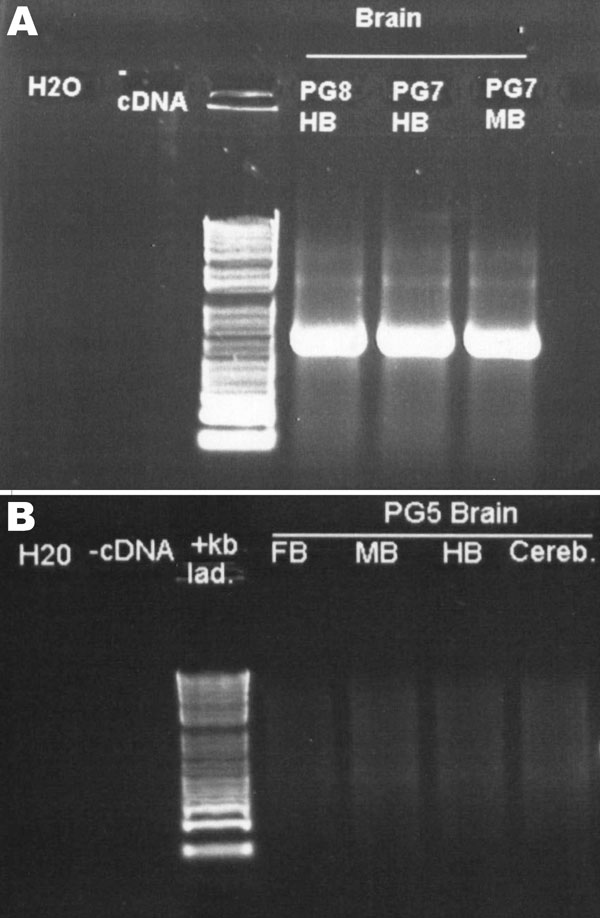Volume 16, Number 3—March 2010
Research
Use of Avian Bornavirus Isolates to Induce Proventricular Dilatation Disease in Conures
Figure 5

Figure 5. PCR of avian bornavirus N-protein in different areas of the brains of A) 2 Patagonian conures (PG7 and PG8) inoculated 55 days earlier with avian bornavirus–infected duck embryonic fibroblasts and B) control, uninfected bird, PG5. HB, hindbrain; FB, forebrain; MB, midbrain; Cereb., cerebrum.
Page created: December 14, 2010
Page updated: December 14, 2010
Page reviewed: December 14, 2010
The conclusions, findings, and opinions expressed by authors contributing to this journal do not necessarily reflect the official position of the U.S. Department of Health and Human Services, the Public Health Service, the Centers for Disease Control and Prevention, or the authors' affiliated institutions. Use of trade names is for identification only and does not imply endorsement by any of the groups named above.